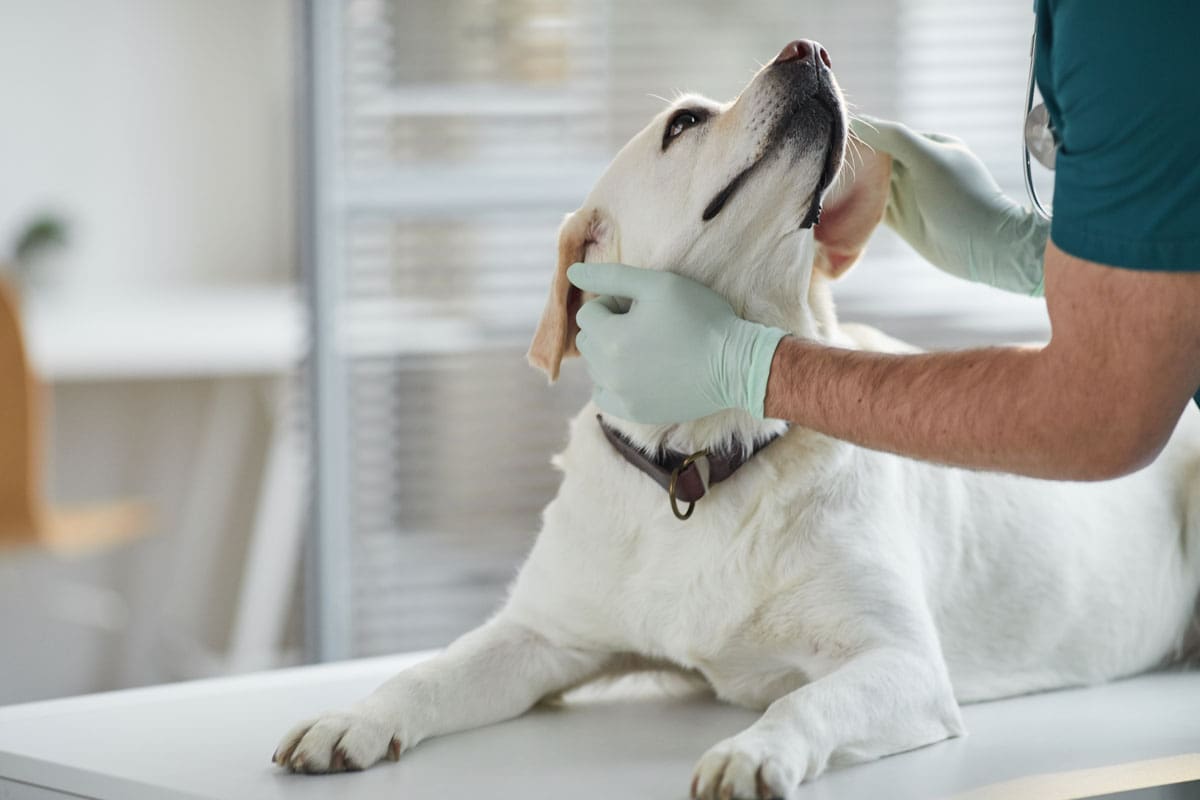In This Article…
• Tetanus is a serious risk in dogs and can be fatal.
• Learn to recognize the symptoms of tetanus in dogs.
• What to do if you suspect your dog has tetanus.
What Is Tetanus?
Tetanus, also called lockjaw, is a serious, but relatively uncommon condition in the United States, with an average of 30 reported cases in humans each year. Nearly all of those cases are among people who never received a tetanus vaccine or keep up-to-date on their 10-year booster shots.
Tetanus is an infection caused by a bacterium called Clostridium tetani, according to the Centers for Disease Control and Prevention (CDC).
Tetanus in Dogs
Dogs can also be infected by the bacteria that causes tetanus. Although it is uncommon in dogs, is often fatal.
How Do Dogs get Tetanus?
Dogs can pick up tetanus in many of the same ways that humans do. This is typically through a puncture wound or open cut or wound that allows the bacteria to enter the bloodstream.
Read More: 10 Common Foods That Can Harm Your Dog
Most Susceptible dogs
Some dogs are more susceptible to others including:
- Dogs between three months to two years old
- Dogs that spend most of their time outdoors
- Large dog breeds (Labradors, German Shepherd, etc.)
Symptoms of Tetanus in Dogs
Dogs with tetanus exhibit many of the same symptoms that affect humans, including:
- Lockjaw and neck stiffness
- Muscle stiffness
- Muscle spasms
- Rigid stance and legs
- Erect ears
- Stiffening of the tail
- Drooling
- Abnormal facial expressions
- Facial swelling
- Fever
- Dehydration
- Difficulty drinking and eating
- Constipation
- Difficulty breathing
How to Determine if Your Dog Has Tetanus
The only way to determine if your dog has tetanus is by a veterinary examination.
Typically, a vet will do a complete physical examination. First, they will look for signs of injury or an open wound that might identify the site of the infection. Your vet will also check to see if your dog is hypersensitive to touch.
Then, the vet will check your dog’s vital signs such as heart rate, blood pressure, temperature, reflexes, and weight.
Next, your veterinarian will obtain blood and urine from your dog to do a complete blood count, chemistry profile, and urinalysis.
One thing your veterinarian will be looking for is increased white blood cells, as well as an increased amount of creatine phosphokinase (CPK). The urinalysis may reveal protein in the urine. That is a sign of muscle contractions.
Your vet may also give your dog an electromyography to test the electrical activity of the muscles which can help diagnose tetanus.
Read More: Strange Dog Behaviors and Warning Signs to Watch For
Treating Tetanus
Dogs have a natural resistance to tetanus. Those with very mild tetanus may recover without any treatment. Dogs experiencing localized tetanus or a mild disease seldom require antitoxin therapy.
Many dogs can be treated with antibiotics to reduce the amount of tetanus toxin produced by the bacteria. Sedatives can reduce muscle spasms, contractions, and convulsions.
Treating Severe Tetanus
It’s worth noting that severe tetanus can be expensive to treat. That is one reason it’s important to vaccinate your dog against it. You also may want to consider pet insurance. The prognosis for dogs with severe tetanus isn’t as positive. Generally speaking, the earlier the treatment is started the better the prognosis.
Treating severe tetanus has three components: Stabilizing the dog, providing medication, and observation.
Stabilization
Dehydration and the risk of respiratory failure are key concerns with a dog that has contracted tetanus. Your vet will start intravenous (IV) fluids and oxygen therapy.
Medication
An antitoxin such as tetanus immune globulin will be administered to slow and hopefully stop the progression of the tetanus. Antibiotics may also be given. Muscle relaxants, anticonvulsants, and sedatives will be administered to keep the dog calm. In certain cases, a feeding tube and/or ventilator may be necessary for the dog to breathe and receive nutrition.
Observation
Dogs with severe tetanus need to be observed around the clock. Therefore, at least 7-10 days of hospitalization is usually required. The length of stay, however, will be dependent on the dog’s condition and response to therapy.
Read More: 5 Things to Do If Your Dog Runs Away






